The ancient city of Myra, now known as Demre, Türkiye, is famous for its rock-cut tombs, well preserved large Roman theater, and Byzantine-Era Church of St. Nicholas. The city is positioned along the Myros River which allowed the civilization to thrive as an agricultural hub and become one of the most influential cities of the Lycian League. Today, Demre continues this legacy with abundant fruit and vegetable cultivation.
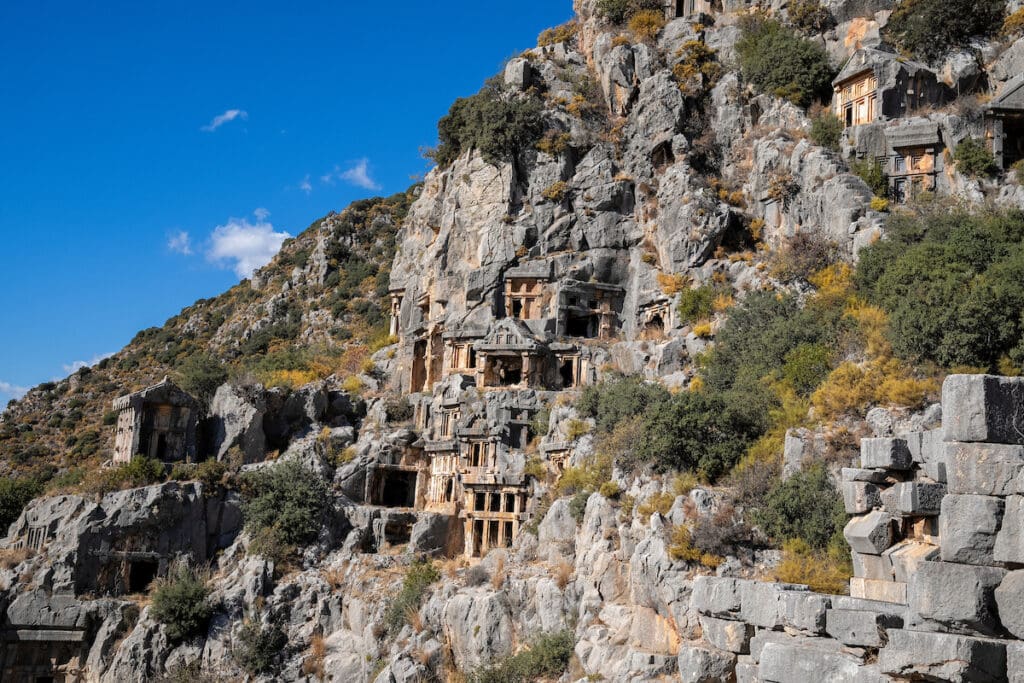
Since its heyday in the 3rd and 4th centuries, the Myros River has deposited layers of silt that buried much of ancient Myra, leaving the city about 32 feet (10 meters) below the current ground level. The visible Greco-Roman theatre and intricate rock tombs are breathtaking, but most of Myra remains hidden beneath the streets of the present day village, waiting to one day be uncovered.
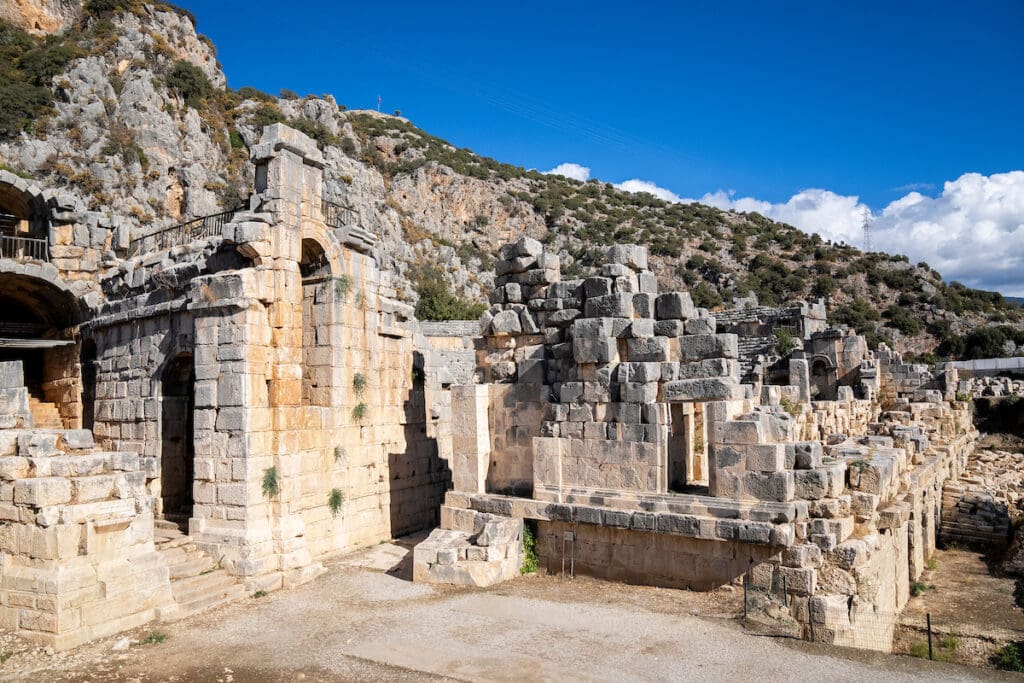
The rock tombs of Myra are carved into the mountainous cliffs that surround and make up the city’s beautiful scenery. The tombs date back to the 4th century BC and have been left as a historical element of the civilizations view on the afterlife. The sheer height of the tombs on the mountains were thought to aid the souls of the departed in their journey, guided by mythical winged creatures.

Many of the tombs are decorated with architecture similar to Lycian homes and Greek artistic elements. The carvings depict daily life of the people of Myra as well as funerary scenes and animals. Some tombs were originally painted in colors like red, blue, yellow, and purple; remnants of which can still be seen today. Among the most notable is the “Lion’s Tomb,” carved with protective lion motifs and the “Painted Tomb” which features once colored human figures.

The Greco-Roman theatre is the largest in Lycia and can seat up to 12,000 spectators. Inlaid into the natural land feature, the theatre contains intricate stonework that has survived centuries. From the seats of the theatre, you can get a great view of the tombs on the surrounding mountains.
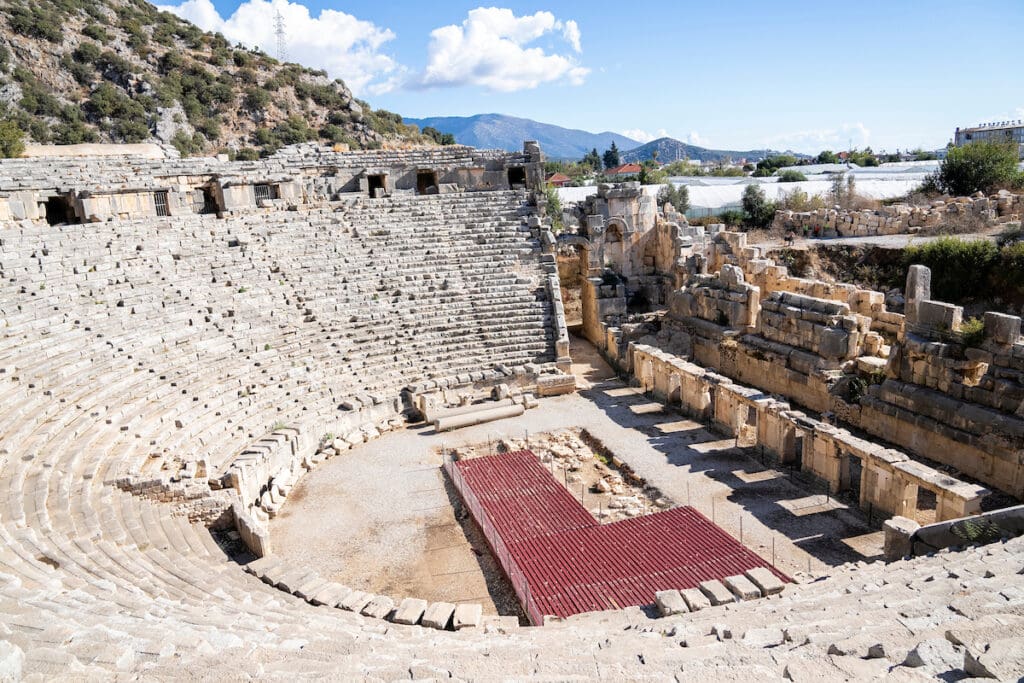
In the 3rd century, St. Nicholas, who inspired Santa Claus due to his gift-giving habits, became the bishop of Myra. While little is factually known about him, it is rumored that he performed miraculous healing prayers for Myras’ people. About 200 years after his death, the St. Nicholas Church was built in Myra under the orders of Theodosius II where his remains were laid to rest. The church is now known as the St. Nicholas Museum.
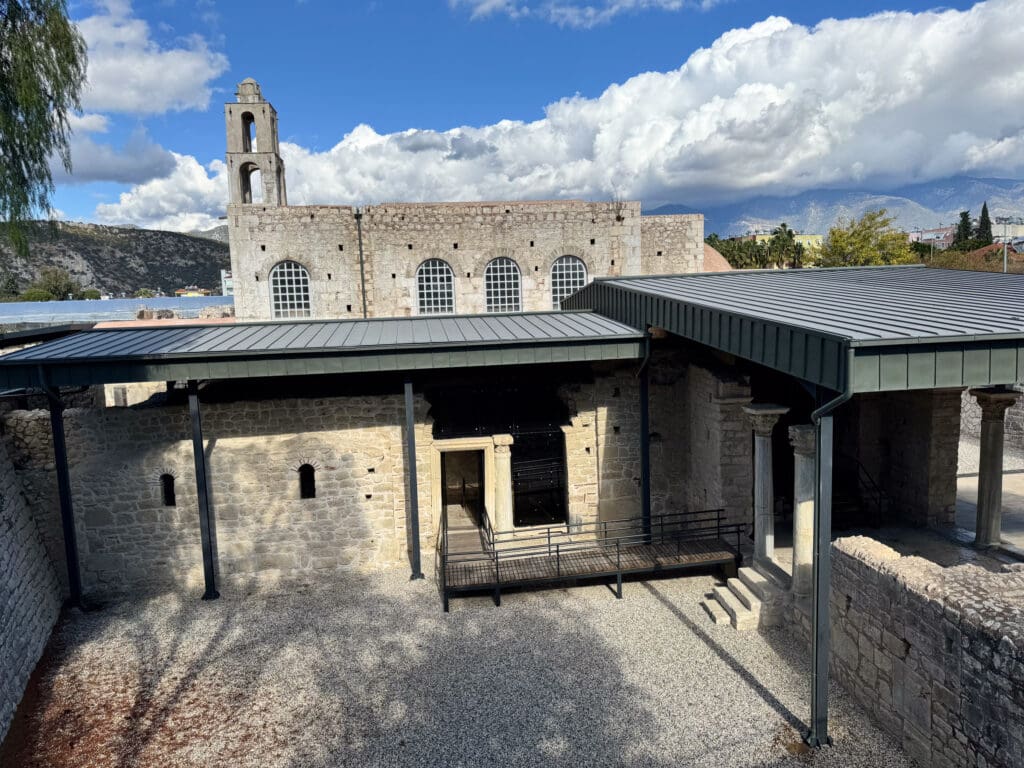
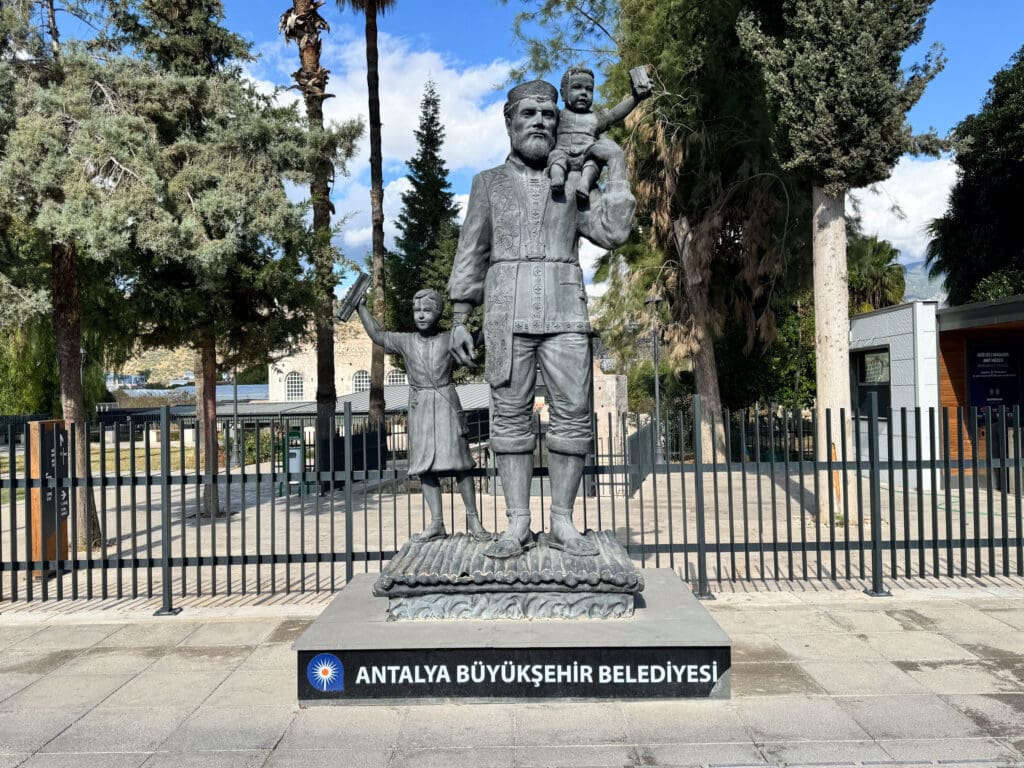
Land and boat tours can be purchased on multiple websites that take you through the historical ruins of one of the most important Lycian cities. Seeing this city next to the beautiful Myros River was an unforgettable experience.

